Spring is in full bloom here in the Eastern Sierra! And, if you caught our recent blog, Spring Wildflowers to See in Mammoth Lakes (Part One), you already know how to identify some of the more common species, like Desert Peach and Inyo Bush Lupine.
But, our area has so much natural diversity that we couldn’t fit all of the wildflowers in one post. So, keep reading for more Eastern Sierra flora to enjoy!
The Monkeyflowers
Here in the Eastern Sierra, we’re lucky to be able to enjoy a few different varieties of the Monkeyflower family. The pink version is called Torrey’s Monkeyflower (Diplacus torreyi) while the yellow ones are most likely to be the Common Monkeyflower (Erythranthe guttata). These delicate bulb-like herbaceous wildflowers like to grow alongside stream banks at high elevations. You can find them along many of the trails out of the Lakes Basin during the spring and summer.
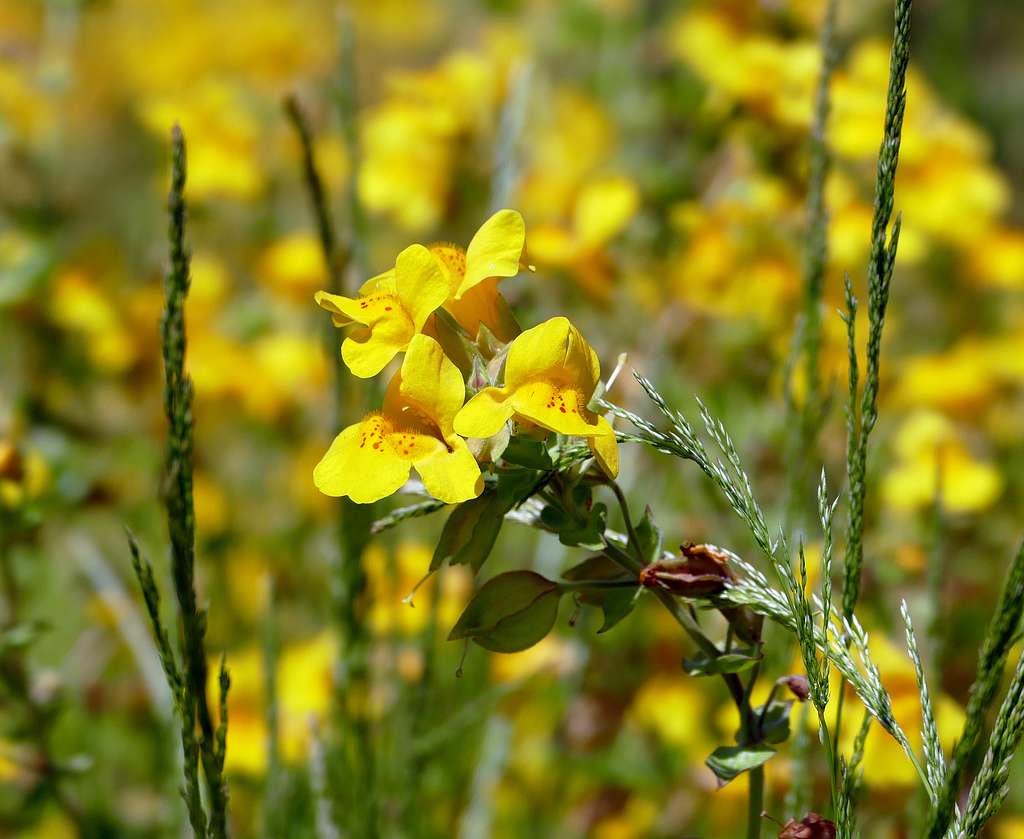
If you’re very lucky, you may be able to see the more elusive Limestone Monkeyflower (Erythranthe calcicola) that grows in rocky areas such as the White-Inyo Mountains to the south.
Antelope Bitterbrush (Purshia tridentata)
The light yellow and white roses of the Bitterbrush plant is a lovely sight to see during the springtime! Here in Inyo and Mono Counties, Bitterbrush flowers and foliage provide food for elk, deer, and bighorn sheep while the seeds are cached by smaller mammals like chipmunks and deer mice. And if that wasn’t enough, bitterbrush also plays an important role in providing coverage for sage-grouse and other birds. In other words, it may just look like another desert shrub, but Bitterbrush is essential to our ecosystem!
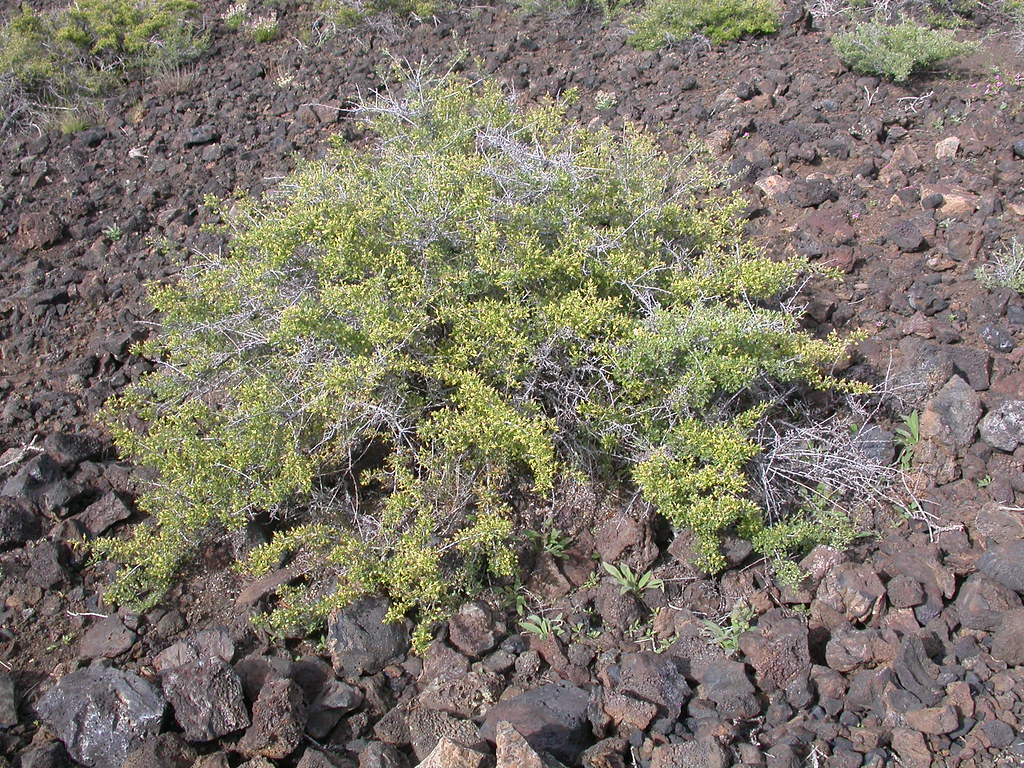
You don’t have to travel far to find Antelope Bitterbrush. You’re likely to see them all along the 395 on your way up to Mammoth Lakes. They grow abundantly throughout desert plains alongside another member of the rose family: the Desert Peach.
Scarlet Gilia (Ipomopsis aggregata)
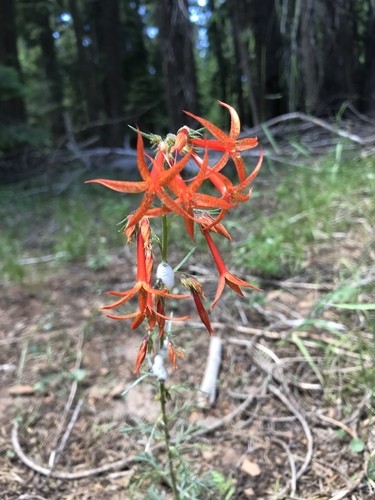
This dramatic little flower, also known as skyrocket, is a common sight in the backcountry around Mammoth Lakes from May to July. You can identify them by their tube-like flowers and starburst petal structure which typically comes in bright red in our area. This flower's unique structure is inviting to pollinators who are perfectly adapted for reaching the nectar at the base of the flower—think hummingbirds and moths!
Woolly Mule’s Ears (Wyethia mollis)
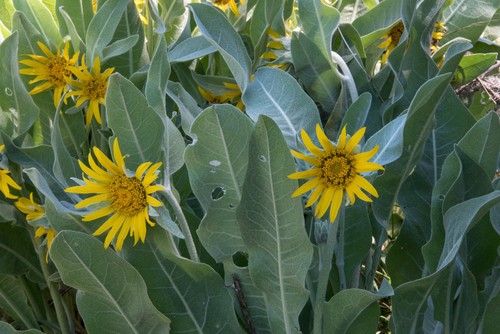
As lovable as the animal they’re named after, Mule’s Ears are happy sunflower-like plants that grow abundantly in our region! They love to share meadows with sagebrush and other hardy plants and can even survive in volcanic soils by putting down deeper roots than most flowering plants. After a wildfire, they’re often the first species to make a reappearance.
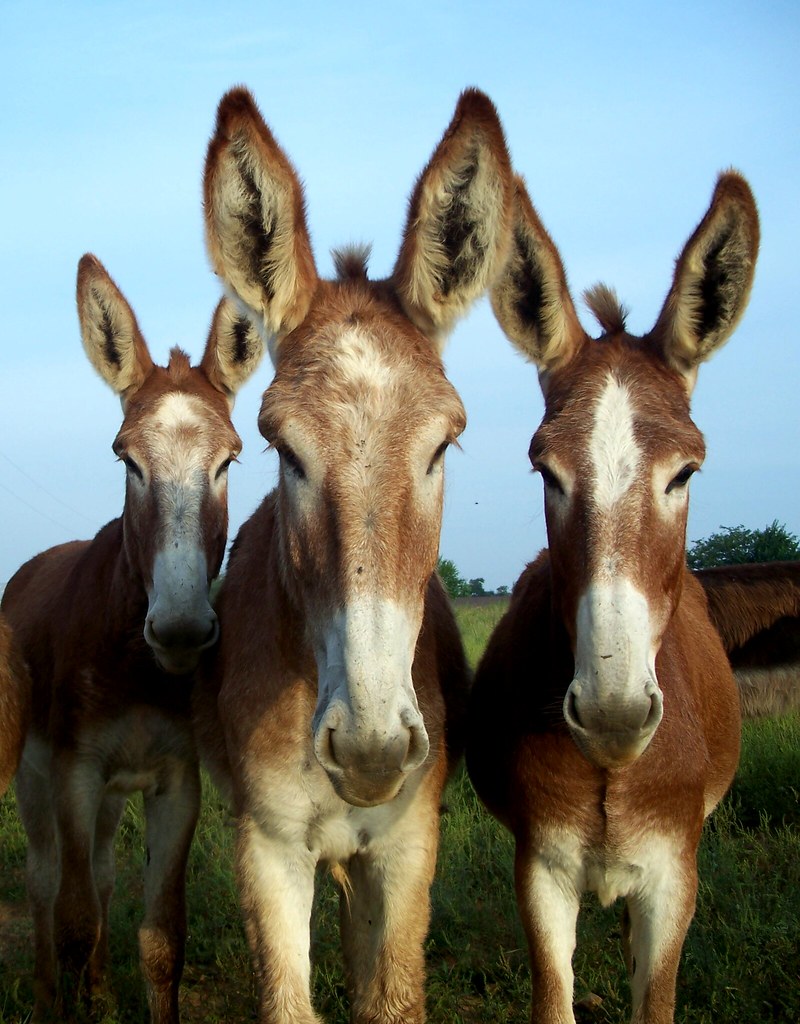
You can easily identify this wildflower by its large fuzzy pale green leaves that look like mule ears. Bright yellow flowers bloom in late spring, and their large, delicious seeds provide food for birds and rodents.
Mountain Larkspur (Delphinium glaucum)
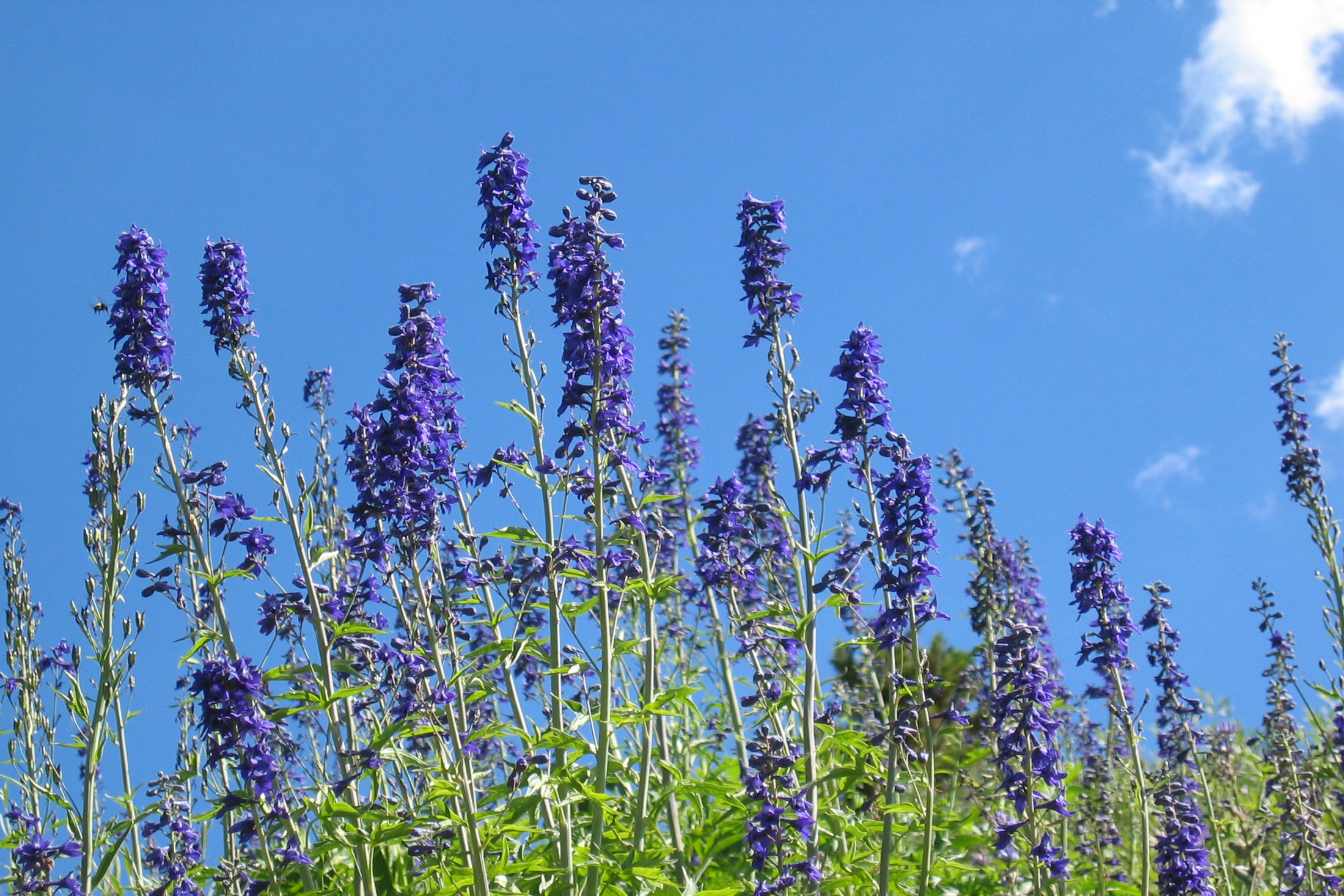
Say hello to High Sierra wildflower royalty! These deep purple towering flowers can grow up to 9 feet in the right conditions, and can be seen stealing the spotlight in high altitude meadows and along streams. They are an especially common sight along the trail to Sky Meadows.
Although hummingbirds love these gorgeous flowers, it’s important to know that larkspur are highly toxic to humans and animals. So, while you may enjoy seeing them during their peak blooming season of spring and summer, it’s best not to touch them.
Rubber Rabbitbrush (Ericameria nauseosa)
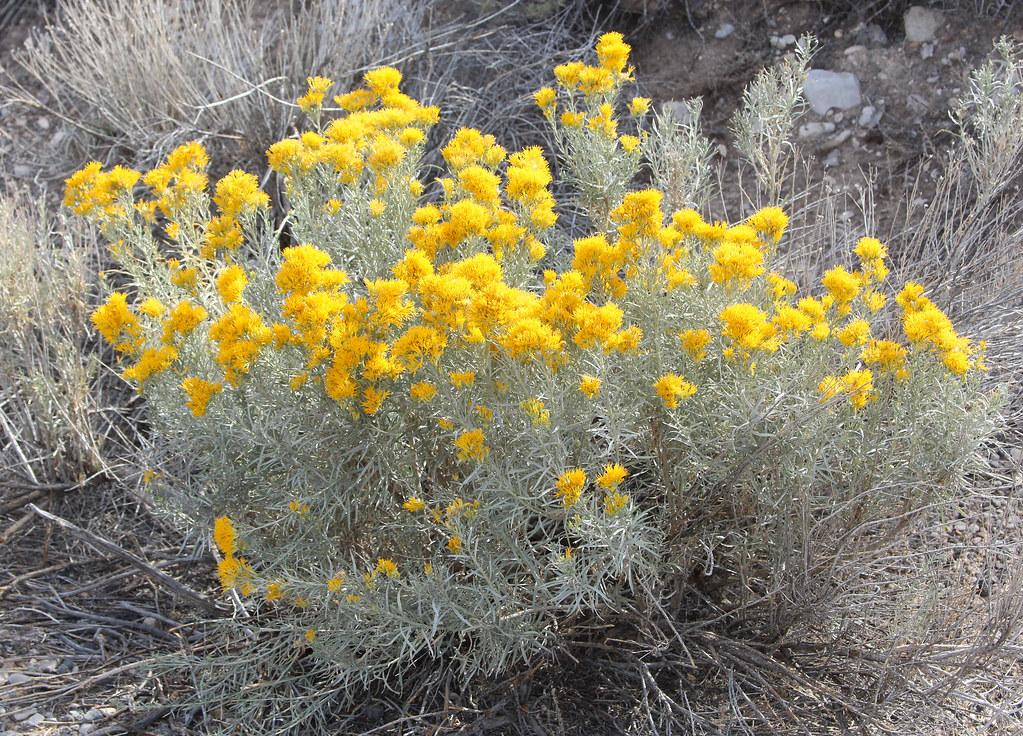
This feathery yellow-flowering plant is another common sight during this time of year! You’re most likely to see rabbitbrush alongside sagebrush and maybe even misidentify one for the other. You can differentiate between the two because rabbitbrush isn’t as pungent and has narrower straight leaves as opposed to the lobe-leafed sagebrush.
True to its name, rabbitbrush is a snack for wild jackrabbits as well as other animals including mule deer. And, if you’re wondering where the rubber comes into play, this plant’s sap contains the chemical components of natural rubber. In fact, rabbitbrush was used as a source of rubber during both World Wars and is currently being studied as a possible alternative to latex.
Mountain Pride (Penstemon newberryi)
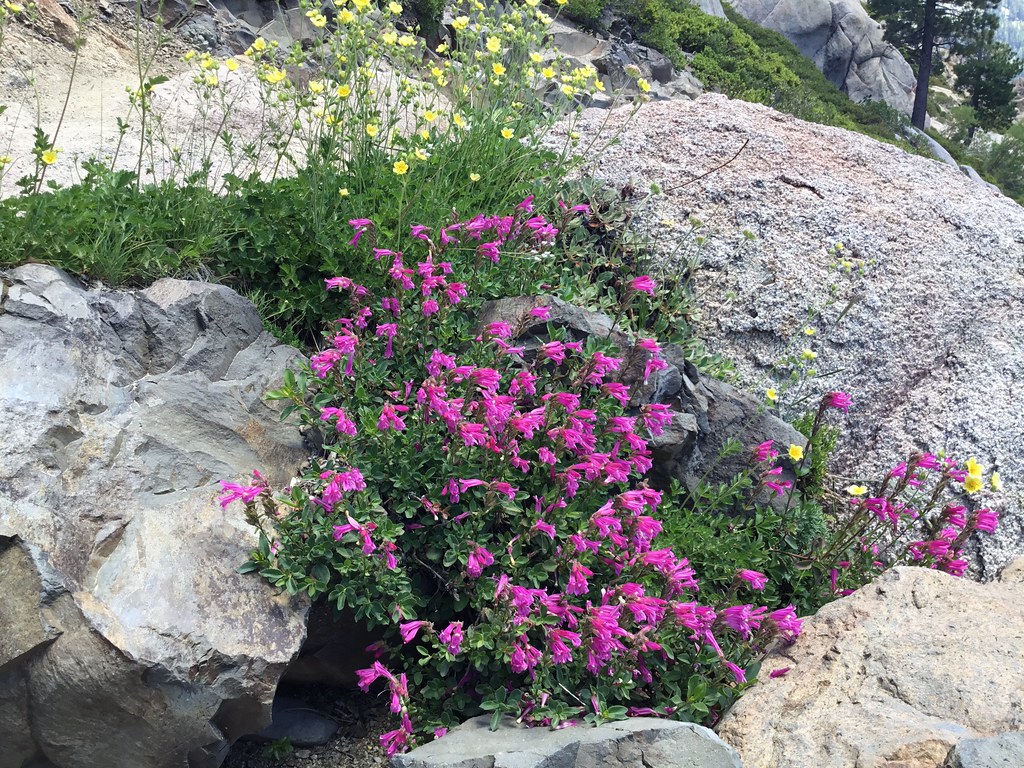
Native to Oregon, California, and Nevada, Mountain Pride is a small, drought-hardy wildflower that you’re likely to see along the trails throughout the Lakes Basin. It has a bright pink funnel shaped flower and is a member of the penstemon family. Crouch down to get a closer look of this short, shrubby plant and you’ll see that it’s quite hairy!
Mountain Pride will be in full bloom sometime in mid July and August. Look out for these pink clusters on rocky outcrops with plenty of sunshine.
White Bog Orchid (Platanthera dilatata var. leucostachys)
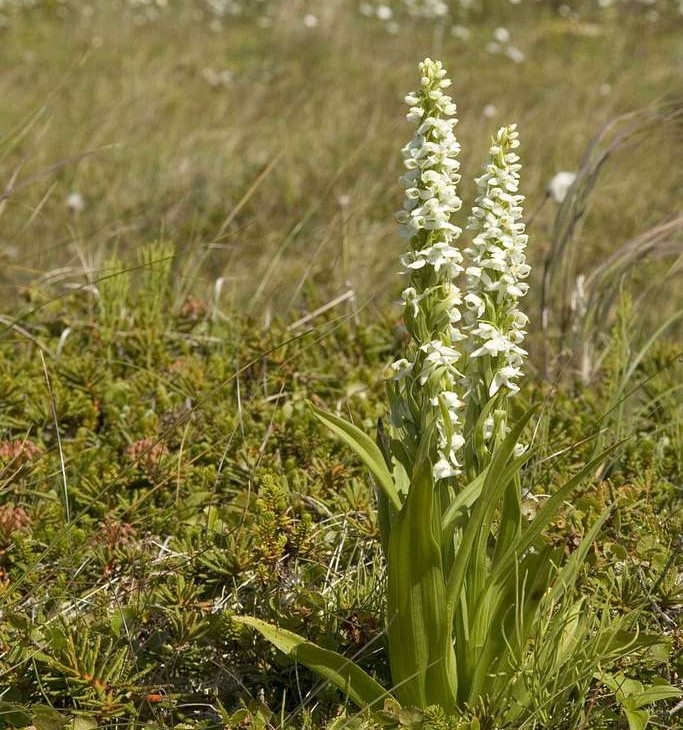
The name orchid may conjure up images of tropical flowers found deep in the jungles of South America. But here in California, we have a native variety of our own: the White Bog Orchid! This marsh-loving wildflower can be identified by its single tall stalk of delicate white flowers.
When you take the time to smell these flowers, you’ll be treated to a pungent aroma of cloves and other spices. That being said, do the same in Yosemite and you might get a less pleasant scent! The newer variety of bog orchids in our closest national park features a yellow flower and smell that resembles horse manure.
White bog orchids are happiest in the wettest areas of the Eastern Sierra. You can find them throughout the June Lake Loop and at Lundy Lake.
How many Eastern Sierra wildflowers can you identify?
In this two part series of common wildflowers in our area, we’ve covered 16 amazing species that you’re likely to find during your next spring or summer trip to the mountains. We hope that you’re feeling as inspired as we are to get out there and start enjoying the beauty of these native wildflowers! Remember that the blooming season is short, with peak bloom happening sometime between June and the end of July. Book your trip with Mammoth Mountain Reservation now to boost your chances of seeing the highest number of Eastern Sierra wildflowers!
